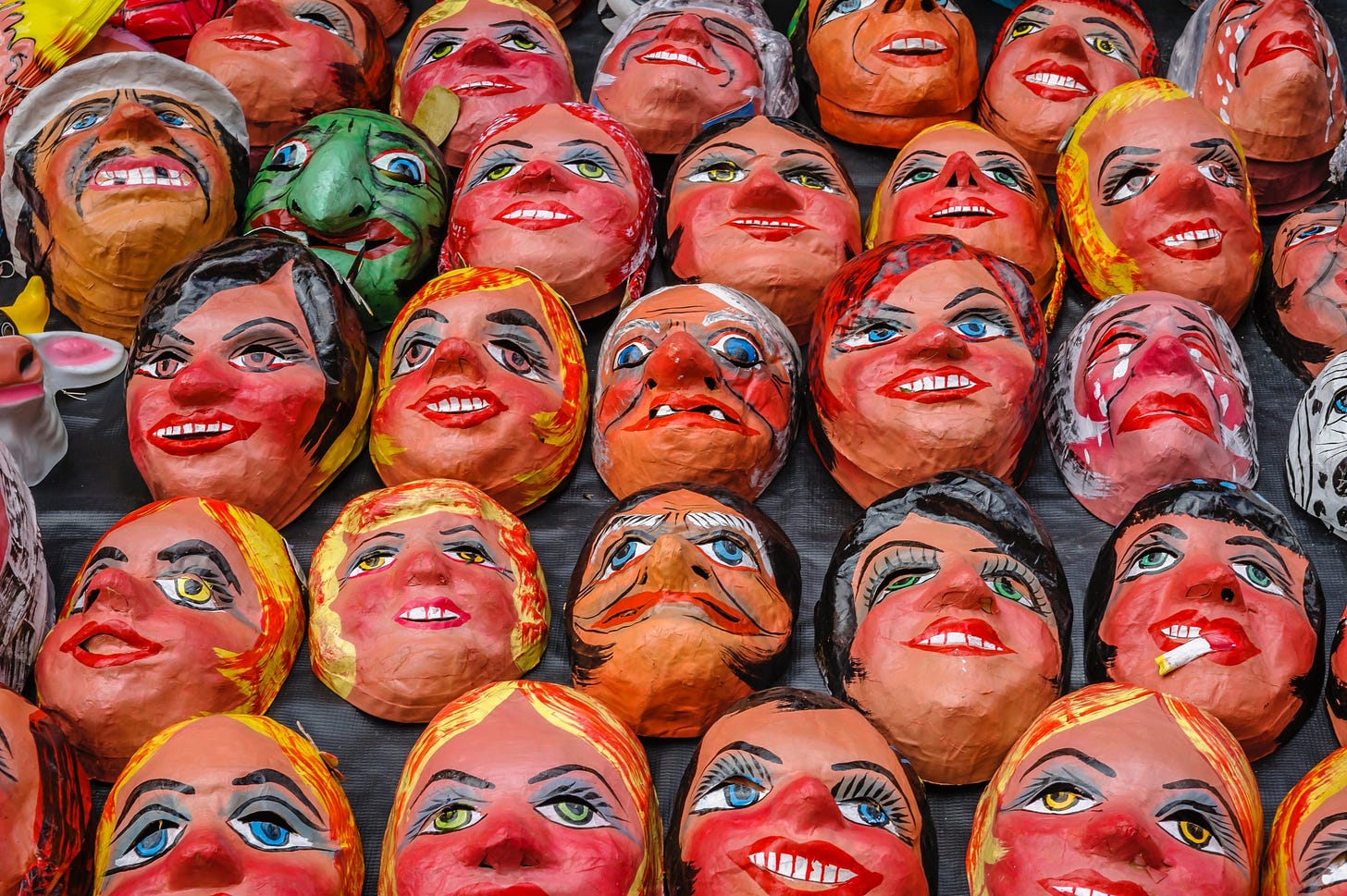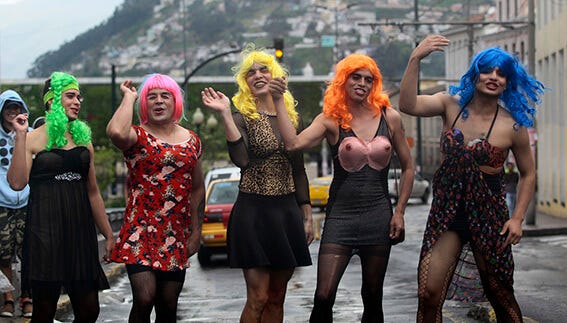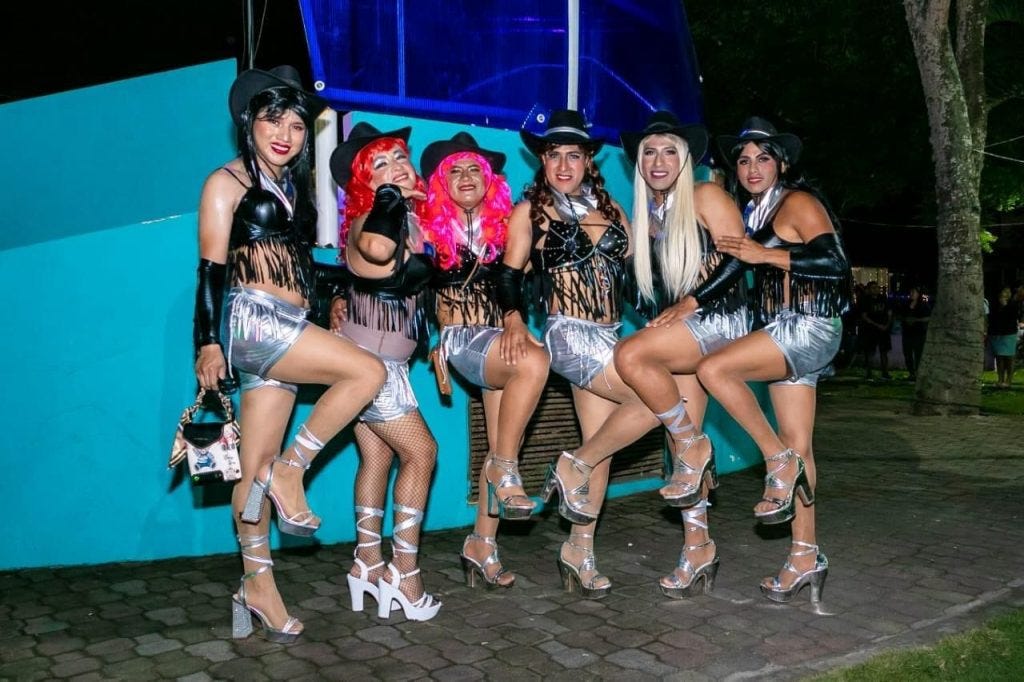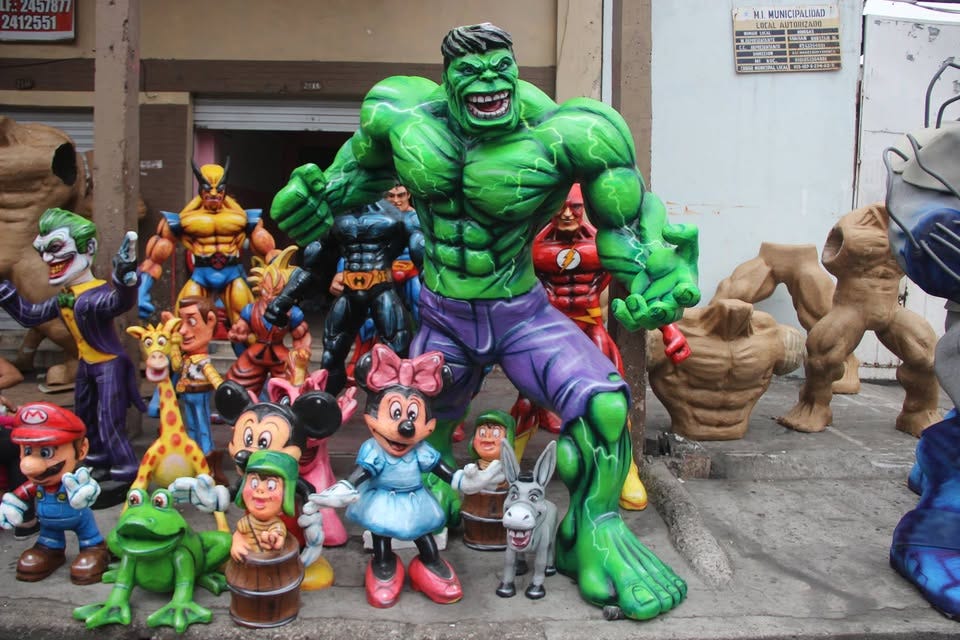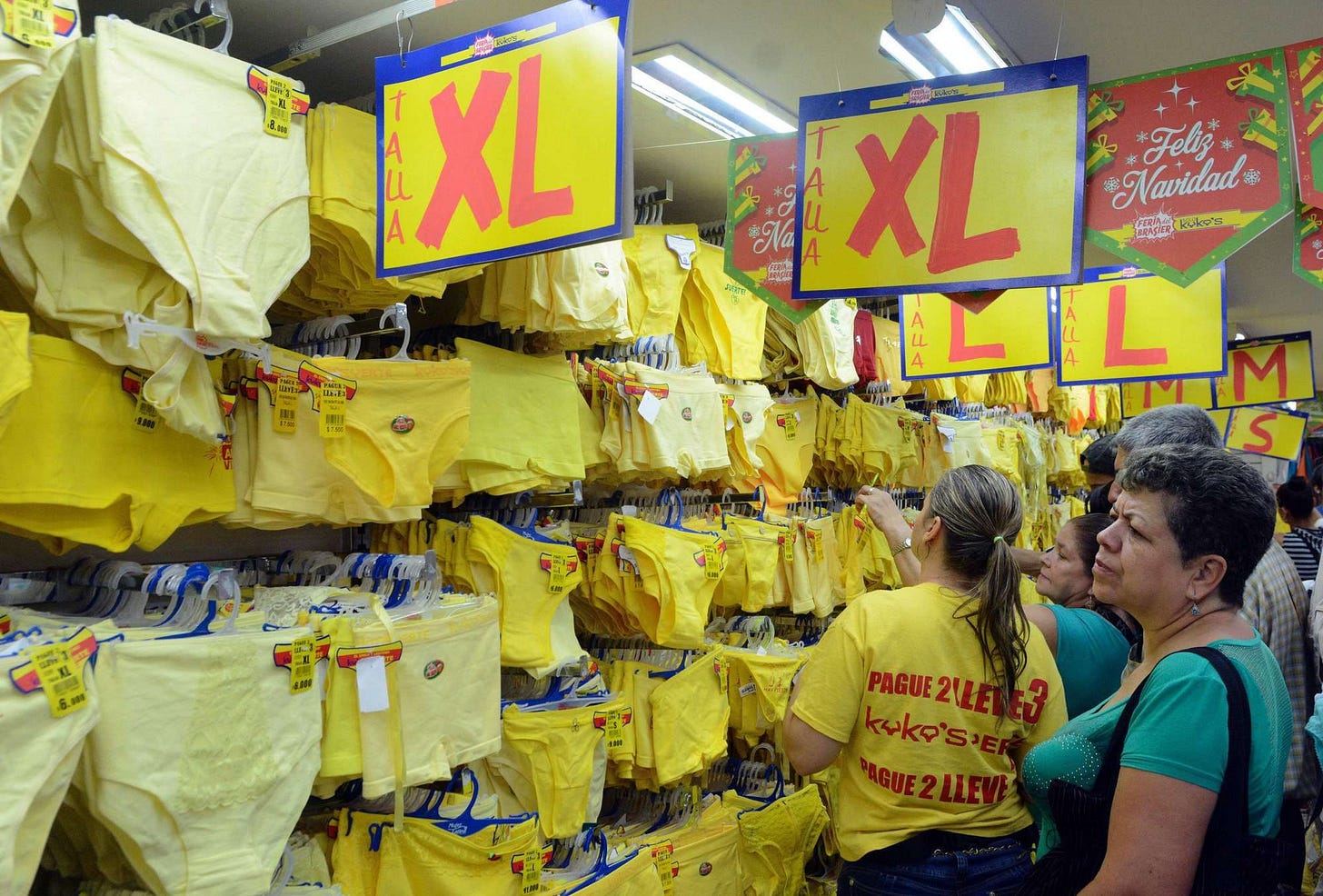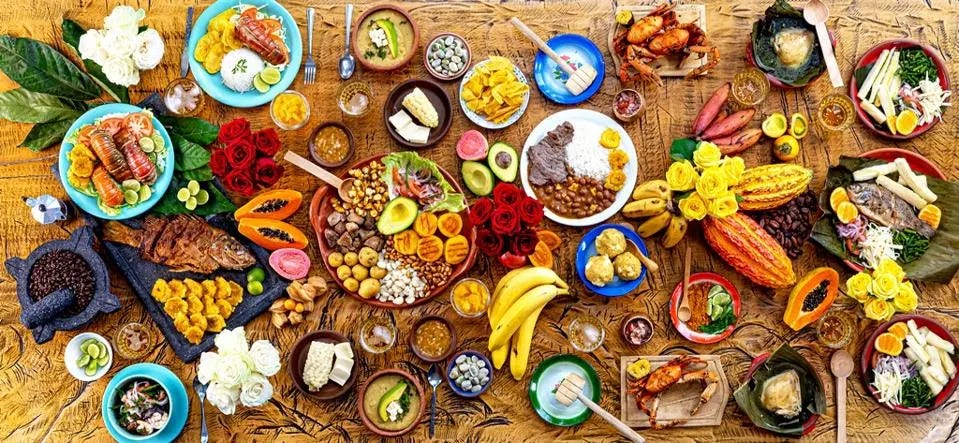This is a great question: Are there any New Year traditions in Mompiche? If you Google “Countries with the best New Year’s Eve parties” you’ll find Ecuador in all the lists of countries with fantastic New Year’s parties. Not limited to Mompiche, but all over Ecuador, there are a number of cultural activities that Ecuadorians participate in during the end of year festivities to try to ensure a healthy, safe, and prosperous New Year. In fact, we only see a few of these in Mompiche each year. The bigger towns and cities host much bigger and brighter events that last all day and well into the night.
Las Viudas
One of the traditions that take place every year that is unique to Ecuador is Las Viudas. This word translates to ‘widows’ and they represent the grieving and mourning of el año viejo, crying for the old man who burns and the year that is gone. The figure of the 'widow' finds its roots in ancient funeral ceremonies, where widows, dressed in mourning and accompanied by their communities, paid tribute to their deceased husbands and participated in the rites until the burial.
Being a viuda calls for reckless abandon and role play. And who better to play the role of the grieving widow than young Ecuadorian men dressed up as women in colored wigs, mourning dresses, nylon stockings and heels, often using balloons in their dresses to create over-sized boobs and bums. Red lipstick, eye shadow, false eyelashes, earrings, necklaces or masks complete the outfit of the men to represent the ‘widows’ in mourning who stop traffic in the streets, flirt with the drivers, and panhandle local passers-by.
Las Viudas run around the streets performing pranks, causing havoc, and asking for spare change for the ‘funeral’ of the old man who is leaving. Any poor old taxi driver who doesn’t pull up with a handful of loose change is in big trouble. If you don’t give them change, it is considered bad luck and no one wants to start off the New Year with bad luck.
Las Mojigas
Las Mojigas are said to be the daughters of Las Viudas, younger, more vibrant, and representative of the pulsating energy of the New Year to come. Culturally, Ecuadorian women don’t generally engage in flirtatious behavior so shamelessly in public. To provide this fun annual service, men and boys don makeup, skirts, dresses, and wigs, borrowing clothes from their sisters, mothers and friends, and run around asking for spare change.
Las Mojigas will use whatever provocative means necessary to bring traffic to a halt, including, but not limited to: flirting, flashing, lifting, lowering and/or providing unsolicited ‘lap dances’ to the hoods of cars. Once ensnared in the seductive song of these street sirens, a driver is granted permissions to pass after offering a small ‘donation’. These lively mojigas bring the party to the people. Typically, mojigas can make a lot of money on these final days of the year because they can be very persuasive, and also because they won’t stop flirting with you until you give them some coins!
Los Monigotes
Aside from the public displays of drag, dance, and entertainment, during the last week of December, Ecuadorians are busy buying or making their annual monigotes, large papermaché or fabric doll figures. These colorful dolls are displayed outside of people’s houses, in the back of trucks, and strapped to the front of cars and houses.
In some of the larger cities in Ecuador, people have competitions in their neighborhoods for who has the biggest and the best monigote, and often each neighborhood will have their own theme. In Guayaquil, there are several giant monigotes each 4-5 meters tall that parade through the streets. Monigotes can be anything from generic faces and animals to Super Mario characters, to famous actors and musicians, or unpopular presidents.
In rural villages like Mompiche, old clothes are stuffed with sawdust and a face is painted on the head or a papermaché mask can be bought from the store to fix on the head. This doll represents the old year and a years’ worth of demons that need to be dealt with in one night. Right before midnight on the 31st, everyone heads to the beach with their monigotes for la quemada, where they light bonfires and burn their monigotes, saying goodbye to the old year, and making room for the new. While the fires are burning, some people jump through the flames in a ritualistic ‘cleansing’ ceremony to prepare themselves for the year to come.
Twelve Grapes
Shortly after midnight, while watching the fireworks, people eat twelve grapes (as is customary in Spain and other Latin American countries), and make twelve wishes for the New Year. This tradition began in the 1880s. These old stories passed down for generations tell of bourgeoisie in Madrid copying the French tradition of having grapes and champagne on the last day of the year. Before long this custom had been adopted by certain madrileños who went to Puerta del Sol to see the bells chime at the turning of the year and, most likely in an ironic or mocking manner, to eat grapes like the upper class. Naturally, the tradition traveled to Latin America on Spanish galleons and is still popular today.
Las Cábalas
If scoffing grapes at midnight isn't strange enough, another tradition calls for Ecuadorians to wear red or yellow underwear throughout the New Year’s Eve festivities. Las Cábalas are red or yellow ropa interior, or underwear, panties or boxers, bras, socks, garters, whatever you can get your hands on. The most popular items in stores are red and yellow underpants. And—even stranger yet—this aforementioned colorful undergarment should be given to you by someone else. If you wear red underwear, you will most certainly attract love and romance in the new year, and if you wear yellow, you will definitely attract wealth and success. Some people cover all their bets and wear both.
Pack Your Suitcases
According to yet another interesting tradition, if you’d like to travel more in the new year, simply walk around town with an empty suitcase—or lightly packed suitcase—on New Year’s Eve. And the more trips around the block you take around town, the more trips you will take in the next twelve months!
The Midnight Feast
Celebration and family hold great significance in Ecuador, so after the viudas and mojigas have been paid and gone home to return their costumes to their mothers and sisters, after the monigotes have been burned on the beach, and the fire jumpers have been cleansed, and the twelve grapes have been eaten and wished upon, there is a family feast to attend. In the middle of the night, as many family members as can be gathered together join together in a feast of culinary delights and talk about their dreams and wishes for the coming year.
I hope you enjoyed this answer to the reader’s question and learned something about the end of year traditions in my chosen home. While I don’t participate in much partying these days, I encourage anyone who wants to experience the New Year’s Eve frenzy in Ecuador to do so with abandon…





